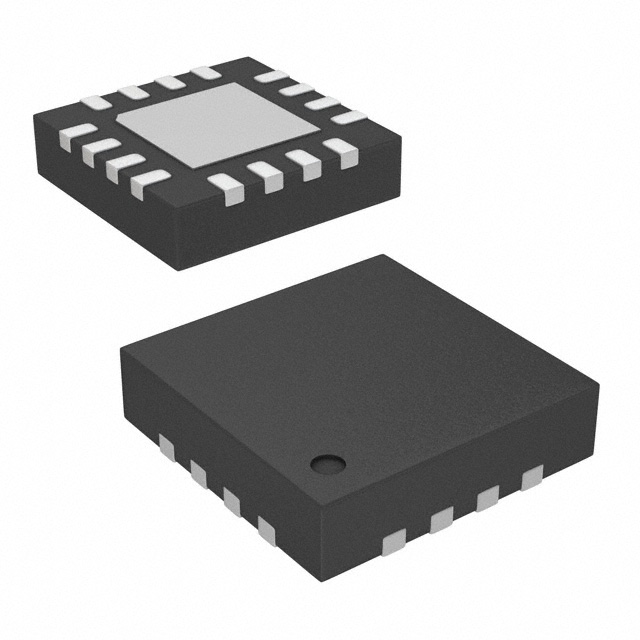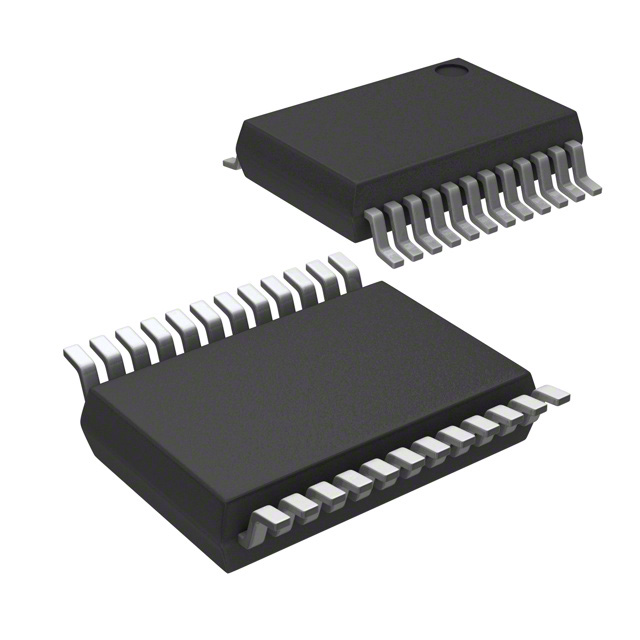Ⅰ. Audio Special Purpose
Ⅱ. Physical Characteristics of Audio Special Purpose
Ⅲ. Electrical Characteristics of Audio Special Purpose
Audio special purpose refers to a category of electronic devices or integrated circuits (ICs) specifically designed for audio processing and related applications. These devices are engineered to perform dedicated functions and tasks that are essential in audio systems, ensuring high-quality sound reproduction, signal processing, and audio effects.

Audio special purpose devices are designed to handle various aspects of audio processing, including signal conversion, amplification, filtering, mixing, and effects generation. They are optimized to provide accurate and reliable audio performance while minimizing noise, distortion, and other unwanted artifacts. These devices are commonly used in a wide range of applications, including consumer electronics, professional audio, broadcasting, automotive audio systems, musical instruments, and telecommunications.
Here are some key audio special purpose devices commonly found in audio systems:
1.Audio Amplifiers: Audio amplifiers are devices that increase the power of audio signals to drive speakers or headphones. They receive low-level audio signals and amplify them to a level suitable for driving speakers or headphones, ensuring sufficient volume and clarity in sound reproduction.
2.Digital-to-Analog Converters (DACs): DACs convert digital audio signals into analog signals, allowing digital audio files or streams to be played back through analog audio devices such as speakers or headphones. DACs are crucial components in audio playback devices, ensuring accurate and high-fidelity conversion of digital audio data into analog waveforms.
3.Analog-to-Digital Converters (ADCs): ADCs convert analog audio signals, such as those produced by microphones or musical instruments, into digital data that can be processed, stored, or transmitted. ADCs are fundamental in audio recording devices, audio interfaces, and other audio systems where analog audio needs to be converted into a digital format.
4.Audio Codecs: Audio codecs combine ADCs, DACs, and digital signal processing (DSP) capabilities into a single integrated circuit. They handle both analog-to-digital and digital-to-analog conversion, as well as audio compression and decompression algorithms. Audio codecs are commonly used in consumer electronics like smartphones, tablets, and laptops to enable audio playback, recording, and communication functionalities.
5.Audio Effects Processors: Audio effects processors are dedicated devices or ICs designed to apply various audio effects to audio signals. They can generate reverb, delay, modulation, equalization, compression, and other effects to enhance the sound and create artistic audio treatments. Audio effects processors are commonly used in professional audio equipment, musical instruments, and audio production systems.
6.Audio Filters: Audio filters are circuits or ICs that modify the frequency response of an audio signal. They can be used to remove unwanted frequencies, shape the frequency spectrum, or implement specialized audio processing techniques such as equalization, crossover filtering, or noise reduction. Audio filters are employed in various audio systems to improve sound quality and tailor the audio response to specific requirements.
These are just a few examples of audio special purpose devices that contribute to the overall audio processing chain. The combination of these specialized devices and technologies ensures accurate audio reproduction, signal integrity, and creative audio manipulation in a variety of audio applications.
Physical Characteristics of Audio Special Purpose
The physical characteristics of audio special purpose devices can vary depending on the specific type of device and its intended application. However, there are some common physical considerations that apply to many audio special purpose devices. Here are a few key physical characteristics to consider:
1.Package Type: Audio special purpose devices are typically available in various package types, such as integrated circuits (ICs) with different form factors and pin configurations. The package type determines how the device is physically mounted and connected to a circuit board or system.
2.Size and Footprint: The size and footprint of audio special purpose devices can vary significantly depending on their complexity, functionality, and the specific requirements of the application. Smaller devices are often used in portable consumer electronics, while larger devices may be found in professional audio equipment.
3.Pin Configuration: The pin configuration of audio special purpose devices defines the arrangement and function of the electrical pins that provide connectivity to the device. The pin configuration may include power supply pins, input and output pins, control pins, and ground connections. It is important to ensure that the pin configuration is compatible with the target system or circuit board.
4.Mounting Options: Audio special purpose devices may support different mounting options, such as surface-mount technology (SMT) or through-hole mounting. The choice of mounting option depends on factors like the manufacturing process, space constraints, and the requirements of the application.
5.Input/Output Interfaces: Audio special purpose devices may have specific input and output interfaces for connecting to external audio sources or destinations. These interfaces can include analog audio connectors (e.g., RCA, XLR, TRS), digital audio interfaces (e.g., S/PDIF, AES/EBU, HDMI), or specialized connectors for specific audio applications.
6.Controls and Indicators: Some audio special purpose devices may feature physical controls such as knobs, buttons, or switches for adjusting settings or selecting modes of operation. They may also have indicator lights or displays to provide visual feedback or status information.
7.Environmental Considerations: Audio special purpose devices may need to meet certain environmental standards or certifications, such as RoHS (Restriction of Hazardous Substances), to ensure compliance with regulations. They may also need to operate within specific temperature ranges, humidity levels, or other environmental conditions.
8.Aesthetics: In certain applications, the physical appearance and design of audio special purpose devices may be important. Consumer audio products often prioritize aesthetics, with sleek and visually appealing designs that integrate well into home audio setups or portable devices.

Electrical Characteristics of Audio Special Purpose
The electrical characteristics of audio special purpose devices play a crucial role in their performance and compatibility with audio systems. These characteristics define how the devices handle and process audio signals. While the specific electrical characteristics can vary depending on the type of audio special purpose device, here are some common considerations:
1.Power Supply Voltage: Audio special purpose devices have specified power supply voltage requirements. It is important to provide the device with a stable power supply within the specified voltage range to ensure proper operation and prevent damage.
2.Power Supply Current: The power supply current, often referred to as operating current or supply current, represents the amount of current consumed by the device during operation. It is important to consider the power supply current to ensure that the power source can provide sufficient current and to manage power consumption in the overall audio system.
3.Input Voltage Levels: Audio special purpose devices often have input pins for receiving audio signals. It is important to verify the input voltage levels that the device can tolerate to ensure proper interfacing and compatibility with the audio signals provided to those input pins.
4.Output Voltage Levels: These devices generate output audio signals that need to be compatible with the connected audio components. It is important to verify the output voltage levels of the device to ensure compatibility and proper signal transmission to the connected equipment.
5.Input/Output Impedance: The input and output impedance of audio special purpose devices refers to the electrical resistance or impedance seen at the respective input and output pins. The input impedance determines how easily the device can accept input signals, while the output impedance affects the device's ability to drive signals to external components. Matching the input and output impedance with the connected audio components can help ensure optimal signal transfer and minimize signal degradation.
6.Signal-to-Noise Ratio (SNR): SNR is a measure of the quality of the audio signal relative to the background noise level. Higher SNR values indicate better signal fidelity and less noise interference. It is important to consider the specified SNR of audio special purpose devices to ensure high-quality audio reproduction.
7.Total Harmonic Distortion (THD): THD is a measure of the distortion introduced to an audio signal by the device. Lower THD values indicate less distortion and better audio quality. It is important to consider the specified THD of audio special purpose devices, especially in applications where high-fidelity audio reproduction is required.
8.Frequency Response: The frequency response of an audio special purpose device indicates its ability to accurately reproduce audio signals across the audible frequency range. It is important to consider the specified frequency response to ensure that the device can handle the desired audio frequencies without significant attenuation or distortion.
9.Dynamic Range: The dynamic range of an audio special purpose device represents the difference between the loudest and softest sounds it can accurately reproduce without distortion. A wider dynamic range allows for greater audio detail and clarity. It is important to consider the specified dynamic range to ensure that the device can handle the desired audio dynamics.
10.Crosstalk: Crosstalk is the unwanted interference between audio channels or signals. It is important to consider the specified crosstalk characteristics of audio special purpose devices, especially in multi-channel audio systems, to ensure minimal interference and proper channel separation.



